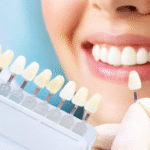
Children’s dental visits matter for more than just clean teeth. Dentists watch for early signs of alignment issues that can affect future oral health. Spotting these problems early can prevent bigger challenges. Children’s dentists use simple yet effective techniques to identify potential concerns. They check for crooked, crowded, or missing teeth. They also look at bite patterns to see if teeth align properly. Early detection means easier fixes and less discomfort for your child. Experts like a Merced orthodontist play a key role in treatment. By working with specialists, dentists ensure your child gets the right care at the right time. It’s essential to address these issues while children’s mouths are still growing. These early interventions help maintain a healthy smile and prevent future discomfort. Being proactive leads to better outcomes and less stress for both you and your child.
Understanding Alignment Issues
Alignment issues refer to how teeth fit together. When teeth are improperly aligned, it can lead to oral health issues like increased tooth decay, gum disease, and difficulties in chewing. Recognizing these signs early is crucial for developing an effective treatment plan.
When to Visit a Dentist
Regular dental check-ups should start at an early age. The American Dental Association recommends visiting a dentist by the child’s first birthday. Early visits help catch potential issues before they develop into more serious problems. Consistent monitoring ensures that your child’s dental growth is on track.
Common Signs of Alignment Issues
Dentists look for several indicators during routine check-ups. Catching these signs early leads to more effective interventions and a healthier smile.
- Crowded Teeth: A common problem where teeth overlap due to insufficient space.
- Overbite/Underbite: Occurs when upper or lower teeth extend too far over the opposite set.
- Crossbite: A condition where upper and lower teeth do not align properly.
- Open Bite: When there is a noticeable gap between the upper and lower teeth when the mouth is closed.
Techniques for Identifying Issues
Dentists use various methods to identify potential alignment problems. These techniques are simple, non-invasive, and essential for comprehensive dental assessment.
| Technique | Description |
| Visual Examination | Dentists look for obvious irregularities in teeth alignment and bite patterns. |
| Dental X-Rays | Provide a deeper look at tooth positioning and any underlying concerns. |
| Impressions | Used to create a model of your child’s teeth and mouth for detailed study. |
The Role of Orthodontists
Orthodontists specialize in correcting alignment issues. They work closely with your child’s dentist to address any concerns. Treatment options might include braces, retainers, or other devices. These interventions are designed to adjust alignment effectively.
According to the American Association of Orthodontists, children should have an orthodontic evaluation by age seven. This timing ensures that any potential issues are addressed while the child’s mouth is still growing, making treatment more successful.
For more information on orthodontic evaluations, visit the American Association of Orthodontists.
Benefits of Early Intervention
Addressing alignment issues early offers several benefits:
- Reduced Risk of Tooth Decay: Proper alignment helps in easier cleaning and reduces the risk of cavities.
- Improved Oral Function: Correct alignment aids in chewing and speaking.
- Enhanced Self-Esteem: A healthy smile boosts confidence in children.
How to Support Your Child’s Dental Health
Parental involvement is crucial in maintaining dental health. Encourage regular brushing and flossing. Ensure your child wears any recommended dental devices as prescribed. Keep up with dental appointments to monitor progress. Educate your child about the importance of dental health so they understand the benefits of maintaining a healthy smile.
Conclusion
Early detection and intervention of alignment issues set the foundation for a lifetime of good oral health. By partnering with your dentist and orthodontist, you ensure your child receives the right care at the right time. Take proactive steps today to support your child’s dental health journey.







